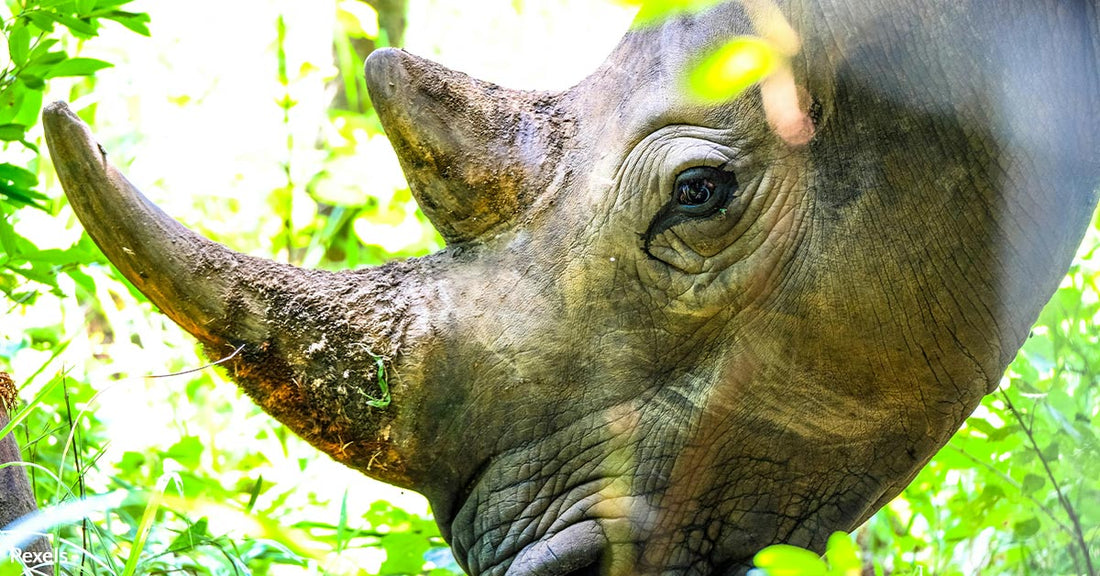South African Scientists Inject Rhinos with Radioactive Material to Save Them from Poachers
Matthew Russell
In a groundbreaking move, South African researchers are testing the use of radioactive material to curb rhino poaching. This innovative approach involves injecting radioactive isotopes into the horns of rhinos, making them detectable by radiation detectors at international borders.
The project, spearheaded by the University of the Witwatersrand’s Radiation and Health Physics Unit, is being hailed as a potential game-changer in wildlife conservation.

The Process
The process begins with tranquilizing the rhino to ensure it remains still and stress-free. A small hole is then drilled into the horn, and radioactive material is carefully inserted. Twenty live rhinos were treated with these isotopes at a rhino orphanage in Limpopo, South Africa. Professor James Larkin, who leads the project, emphasized the meticulous nature of the procedure.
"We are doing this because it makes it significantly easier to intercept these horns as they are being trafficked over international borders," Larkin told Phys.org. "There is a global network of radiation monitors that have been designed to prevent nuclear terrorism, and we're piggybacking on the back of that."

Photo: Pexels
Rhinos are being injected with radioactive isotopes to protect them.
Rhino Poaching: A Persistent Problem
Rhino poaching remains a severe issue, driven by high demand for their horns in parts of Asia, where they are mistakenly believed to have medicinal properties. This illegal trade has devastated rhino populations worldwide. At the start of the 20th century, there were approximately 500,000 rhinos globally, CNN reports.
Today, that number has dwindled to around 27,000 due to relentless poaching. South Africa, home to the largest population of rhinos, has seen over 500 rhinos killed annually. Despite a brief decline during the COVID-19 pandemic, poaching rates have surged again as restrictions eased.
"We've got to do something new and something different to reduce poaching," Larkin told CBS News. "You’ll see the figures, they’ve already started going up."

Ethical Considerations and Criticisms
The initiative has faced ethical scrutiny and criticism from various quarters. Pelham Jones, chairperson of the Private Rhino Owners Association, is skeptical about the method's effectiveness. He told CNN that poachers have already devised alternative ways to smuggle rhino horns, bypassing traditional border crossings where radiation detectors are most effective.
However, Professor Nithaya Chetty, dean of the science faculty at Witwatersrand, assured that the radioactive dosage is minimal and poses no significant risk to the animals or the environment. The project's goal is not only to protect rhinos but potentially other endangered species such as elephants and pangolins.
 Photo: Pexels
Photo: Pexels
The project aims to reduce illegal rhino horn trafficking.
Community and Conservation Efforts
The Rhisotope project is part of a broader conservation strategy that includes various stakeholders. Arrie Van Deventer, founder of the Limpopo rhino orphanage, expressed optimism about the project.
"Maybe this is the thing that will stop poaching," he told CBS News. "This is the best idea I've ever heard."
Other methods previously employed, such as dehorning and poisoning rhino horns, have had limited success. The new approach aims to leverage existing global radiation monitoring infrastructure, originally designed to combat nuclear terrorism, to detect and intercept poached rhino horns.

Looking Ahead
The radioactive material injected into the rhino horns is designed to last for five years, offering a cost-effective alternative to dehorning, which needs to be done every 18 months, Men's Journal reports. The final phase of the project will involve thorough aftercare for the animals and follow-up blood tests to ensure their health and the effectiveness of the protection.
As this innovative project progresses, the conservation community watches closely, hopeful that this could mark a turning point in the fight against rhino poaching. With continued efforts and collaboration, the future may hold a brighter outlook for these magnificent creatures.

